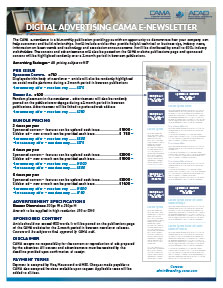Coffee Corner - Embracing The Daily Grind
In pursuit of the perfect cup of coffee, the most common elements mentioned in conversation are bean origins, blend composition, and roast colour. Despite being overlooked at times, coffee grind is also a key element required to deliver high performance taste. The importance of grinding should not be underestimated.
There is a different optimal grind size for every method of brewing. Using an incorrect grind size, inconsistent grind within the throw being brewed, or degrees of variance from the optimal size will result in either under-extraction or over-extraction. Extraction refers to the resulting total dissolved solids (TDS) – aka desirable compounds - after the surface area of the coffee grinds come into contact with hot water. In addition to the fineness of the grind, other extraction-contributing factors include water temperature, brewing time, and the amount of coffee.
Under-extraction can cause undesired sour notes and higher acidity. Conversely, over-extraction tends to result in higher bitterness and hollow flavour.
Grinds range from extra course to extra fine, to accommodate various brewing methods. Coarse grinds provide less surface area for water to come into contact with coffee granules, and are ideal for longer brew times (e.g. high volume brewer/urn, percolator). At the extreme, cold brew calls for extra course grind due to steeping time of atleast 12 hours. Medium grinds are best suited for commercial drip brewers, while fine grinds are ideal for quick brewing styles such as espresso and single-serve (pod-style, vending, or bean-to-cup).
Let’s take a peek behind the scenes at an industrial, large scale grinder to examine the technical process. Visualize coffee beans dropping from the top feeder through 3 levels of paired rollers designed to crush the beans. The first level from the top is the breaker rollers. The base rollers comprise the second level in the middle. And at the third level are the fine rollers. The 3 levels are positioned vertically with a space/gap between each roller that becomes narrower with the next level down. Each roller has grooves that require maintenance from time to time (determined once variances against the desired spec are identified). At the very bottom is a normalizer with auger and chute/gate for controlling density. Adjustments for fine-tuning can be made by widening or narrowing the space between the rollers, sharpening the rollers’ grooves, or controlling the rollers’ speed. To prevent overheating, the rollers are cooled with water. For quality control, testing is conducted with an instrument using laser diffraction to measure the particle size and particle size distribution (in microns). With this type of analysis and precision, meeting a determined standard of on-spec uniform coffee grinds can be consistently achieved.
For smaller scale grinding via bean-to-cup equipment, vending, onsite at Foodservice operations, or at-home, getting familiar with the manufacturers’ maintenance instructions and schedule is recommended. Ultimately, the quality objective is to be precise every time.
In conclusion, don’t forget about coffee grind. It deserves not only greater accountability, but also greater credit for delivering the perfect cup of coffee, no matter how it’s brewed.


%202023.png)


